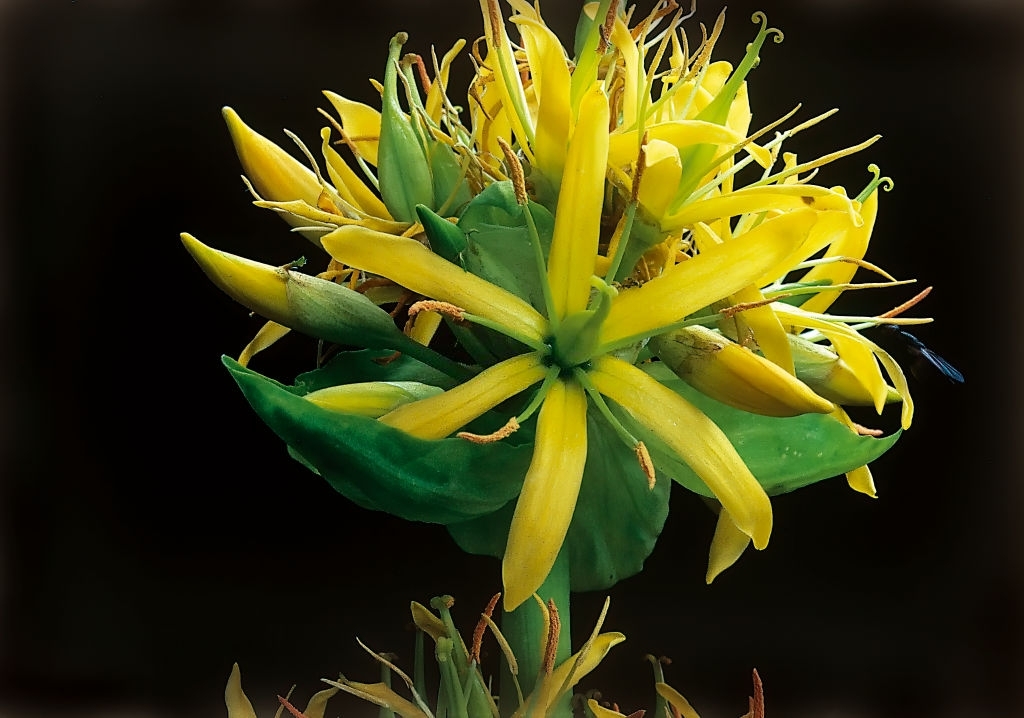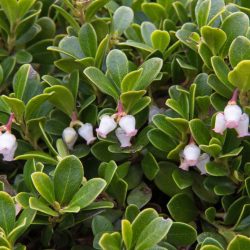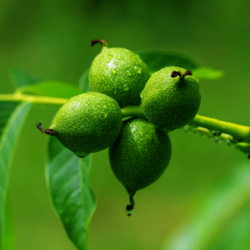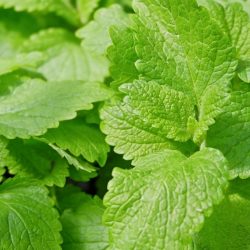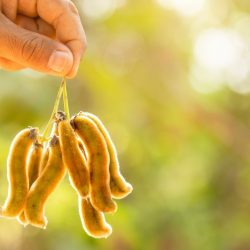Any plant, as long as it has been considered a panacea, drains legendary tales after it . Let us remember that Olivier de Serres gave the gentian as suitable for fostering childbirth , something which seems to underline, by its cheerful aptitude, a great vitality, a remarkable detail, especially since in the time of this eminent agronomist, a good number of French people lived shorter than a gentian.
Unknown to Theophrastus and the Hippocratics, gentian would indeed have been noticed by a king reigning over Illyria, present-day Albania, and, as often, would have given it its name, Gentius , after having discovered its curative powers .
A little history
Dioscorides and Pliny indicate that in their time (1st century AD), yellow gentian was commonly used (snakebites, liver and stomach diseases, eye ailments, ulcers, “serious falls and their suites ”… which inevitably recalls the arnica …). Galen , in the following century, made it an effective plant to purge, drain and cleanse bad moods. It is said that the Romans extolled the qualities of gentian after the invasion of Gaul.
For a long time known as a powerful stimulant of digestive functions , gentian will remain indestructible as febrifuge par excellence, even after the introduction of cinchona in the pharmacopoeia in 1639. Although powerful, cinchona will not have exactly got the better of gentian , since this South American species, relatively rare in the 17th century in France, was sold at an exorbitant price, which the monopoly weighing on cinchona undoubtedly favored.
What are the main pharmacological properties of Gentian root?
Main properties in the digestive system:
-
Stimulation of salivary and gastric secretions:
Bitter substances (secoiridoids), in particular gentiopicrin and amarogentin (the most bitter substance known) are responsible for these pharmacological properties. In particular, they promote salivary, gastric and digestive secretions by stimulating the parasympathetic from the taste receptors.
-
Improvement of postprandial hemodynamics:
A study in humans has shown the mode of action of bitter agents (especially gentian) on the gastric phase of digestion. They cause increased peripheral vascular resistance and decreased cardiac output , reducing stroke volume rather than heart rate. In other words, the response elicited by the bitter taste of Gentiana lutea makes it possible to cope with postprandial hyperemia (which regulates gastric emptying) by increasing vascular tone and reducing postprandial stress on the heart. One of the applications of this action is to reduce postprandial hypotension (potential source of discomfort and coronary events or sometimes fatal stroke), to improve gastric emptying and, moreover, to reduce digestive disorders linked to overeating.
-
Stimulation of gastric motility:
Gentian speeds up gastric evacuation . Eupeptic and anti-gastralgic , gentian acts upon ingestion, it stimulates the secretions and the motility of the stomach, but in high doses, it can induce vomiting. In vitro , it is anti- Helicobacter pylori .
-
Digestive enzymatic stimulation under the influence of the pneumogastric nerve:
Parasympatheticomimetic action.
-
Original properties:
Bitter tonic, gentian is also a powerful appetite stimulant .
-
Protective hepato:
The gentiopicroside protects in vivo the hepatocyte damage induced by the tetra carbon tetrachloride (CC14) and lipopolysaccharide (LPS) / BCG. It decreases the production of hepatic aminotransferases (ASAT and ALAT or SGOT and SGPT) and of tumor necrosis factor alpha (TNF-α). Moreover, gentian has in vitro an antioxidant activity in particular scavenging free radicals.
-
Intestinal antispasmodic:
The gentiopicroside in fact decreases the contractions of the guinea pig ileum induced by histamine, acetylcholine and KCI. It would interfere with the influx of calcium into smooth muscle cells (similar effect to intestinal calcium channel blockers).
Secondary properties at central and peripheral level:
-
Potentiates antidepressants (selective and reversible inhibitors of monoamine oxidase):
Gentian trisubstituted xanthones would also act as selective and reversible inhibitors of type A monoamine oxidase, an enzyme playing a key role in the regulation of the central nervous system.
An antidepressant , gentisin inhibits the pain or depression dyad induced by reserpine, thereby downregulating GluN2B receptors in the amygdala.
-
Reduces the pain / depression duo induced by reserpine:
Analgesic , gentiopicroside improves the depressive state and nociception via the decrease in the expression of GluN2B receptors.
Other properties:
- Antipyretic
Are there any precautions for use with Gentian?
Contraindications:
- Contraindicated in the event of progressive gastric or duodenal ulcers .
- According to the EMA, the use of gentian is not recommended in pregnant women as well as in subjects under the age of 18 (for lack of sufficient data to exclude any risk associated with the use of this plant). However, gentian is not recommended for breastfeeding women because of the passage of bitter principles in the milk.
Precautions for use:
- Medical surveillance in the event of a history of peptic ulcer or gastritis. Consult again if the symptoms persist after 8 days.
How to take Gentian and in what dosage?
Liquid form:
- Standardized fluid extract of fresh plant : 5 ml per dose, 1 to 2 times per day in a glass of water.
- Mother tincture : 30 drops, 3 times a day in water.
- Decoction : 2 g of dried root per cup, to be taken half an hour before food intake.
Gentian in masterly preparation of standardized extracts in liquid form (EPS)
Association with lemon balm :
To fight against motor dyspepsia, poor gastric emptying, gastric paresis and digestive spasms.
Association with turmeric and black radish :
In hyposialorrhea after taking xenobiotics (antidepressants, etc.).
Association with artichoke :
Against dyspepsia due to food overload.
Association with Echinacea :
In prevention of periodonthopathy in dry mouth.
Association with licorice :
For the treatment of gastritis with gastroesophageal reflux, sicca syndrome with dry mouth, glossitis and mucositis on salivary insufficiency.
Association with nettle (aerial parts) :
To accompany convalescence and post-infectious anorexia.
Association with St. John’s Wort :
To treat depression in the elderly with loss of appetite, weight loss and slip syndrome.
Medical bibliographic sources and clinical trials :
- Calliste CA et al., Free Radical Scavenging Activities Measured by Electron Spin Resonance Spectroscopy an B16 Cell Antiproliferative Behaviors of Seven Plants, J. Agric. Food Chem., 2001
- Hostettmann K., Gentian: new indication, European Herbal Medicine Review, 2002
- Rojas A. et al., Smooth Muscle Relaxing Activity of Gentiopicroside Isolated from Gentiana spathacea, Planta Med., 2000
- Wichtl M., Anton R., Therapeutic plants. Tradition, pharmacy practice, science and therapy, Tec & Doc, 1999
- McMullen MK et al., Bitters: Time for a New Paradigm, Evid Based Complement Alternat Med., 2015
- Mahady GB, Pendland SL, Stoia A, Hamill FA, Manufacturer D, Dietz BM, Chadwick LR. In vitro susceptibility of Helicobacter pylori to botanical extracts used traditionally for the treatment of gastrointestinal disorders. Phytother Res. 2005
- McMullen MK et al., Bitter tastants alter gastric-phase postprandial haemodynamics, J Ethnopharmacol., 2014
- Liu, Sb., Zhao, R., Li, Xs. et al. Attenuation of Reserpine-Induced Pain / Depression Dyad by Gentiopicroside Through Downregulation of GluN2B Receptors in the Amygdala of Mice. Neuromol Med 16, 350–359 (2014)

